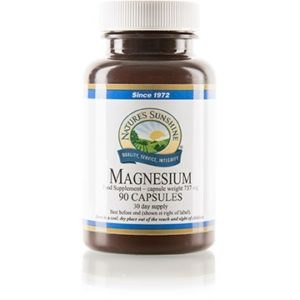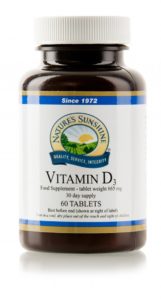What small change can you make in your lifestyle that leads to the biggest impact on your health and wellbeing?
The Pareto Principle, or ’80-20 Rule’ (among other variant names) is named after Vilfredo Pareto (1848-1923), an Italian economist-sociologist, Professor of Political Economy at Lausanne, Switzerland, who first discovered and described the ’80:20′ effect: where two related data sets or groups exist (typically cause and effect, or input and output), for example:
- “80 percent of output is produced by 20 percent of input”
- “80 percent of outcomes are from 20 percent of causes”
- “80 percent of contribution comes from 20 percent of the potential contribution available”
There is no single definitive Pareto ‘quote’ or definition – the above are examples of simple interpretations of Pareto’s 80-20 Rule, for which a very wide range of similar alternatives could be used instead, depending on the situation, including inversions, for example:
- “20 percent of clothes in a wardrobe are worn 80 percent of the time”
- “20 percent of the tools in a toolbox are used in 80 percent of tasks”
- “20 percent of the energy use in a household will offer 80% of the potential energy savings”
What small change can you make in your lifestyle that leads to the biggest impact on your health and wellbeing?
Or, to put it another way, what 20% of lifestyle choices will lead to 80% of the positive effects.
Dr Rhonda Patrick, who has done extensive research on aging, cancer, and nutrition, in a conversation with Tim Ferriss came up with the following recommendations, which I think are pretty close to the mark.
1. Remove sugar from your diet
For persons starting from nothing, the beginning, the number one, and simplest, lifestyle modifications to make with a huge effect on health is to remove sugar from your diet. That means not just cookies, cakes, sweets, lollies, biscuits, crackers, drinks, etc. but also checking the ingredients list on all your cans and jars to ensure that there is no added sugar.
Refined sugar intake throughout the western world is a massive issue. About 10% of adults in the United States get greater than a quarter of their daily calories from added sugar and more than 70% get at least 10% of their daily calories from sugar!
It has been estimated that consumption of sugar-sweetened beverages in 2010 may have been responsible for approximately 133,000 deaths from diabetes, 45,000 deaths from cardiovascular disease, and 6,450 deaths from cancer worldwide
Sugar is the new smoking or alcoholism.
That does not even refer to sugar consumption in general. Just sugar sweetened drinks on their own! Correlation studies have demonstrated that Americans who averaged one can of soda per day had a 46% greater risk of acquiring pre-diabetes versus low- or non-consumers over a 14 years study. Similarly, another report presented that swapping one sugary drink such as a soda or a sweetened juice with calorie low beverages like water or unsweetened coffee or tea decreased the Type II diabetes risk by up to 25%.
Removing sugar from your diet has been shown to have effects fairly quickly. Research found obese children that were put on a diet with no added sugar for only 10 days decreased fasting blood glucose by 5 points, decreased insulin levels 1/3, and also improve cholesterol and blood pressure.
Removing sugar from your diet may be the easiest and most effective thing a person can do to radically enhance their health. Refined sugar is not only associated with greater risk of many diseases, it also accurately speeds up the aging process.
Healthy persons that consumed around 12 cans of soda per day had shortened telomeres in their white blood cells compared with age matched persons the but do not drink soda everyday. Shorter telomere length is a well-established biomarker for aging and the shortening found was equal to to 4.6 years of normal aging.
Another key factor for aging is inflammation, which may also play a large art with sugar consumption. A study demonstrated if healthy, normal weight young men drank around 10 litres of a sugar-sweetened beverage that replicated drinking a daily soda for 3 weeks, it caused an elevation in the biomarker of inflammation C-Reactive Protein 60% to 100% more than baseline levels.
What about hormones?
Researchers found men had a 25% decline in testosterone levels for up to 2 hours after consuming 75g of sugar. Besides the ‘sugar rush’, there is nothing beneficial about eating refined sugar. By the way, it has also been demonstrated that sugar elevates dopamine and facilitate the brain’s reward pathway in a very similar way to drugs like tobacco, cocaine, and morphine, and has even been shown to minimally affect the opioid system. The pattern obeys a comparable path.
As Dr Patrick, describes it:
You continually activate the brain’s reward system, you begin to lose self control, start to crave it, and eventually build up a tolerance to it so you need more and more.
These similar apparatuses are activated when we discuss sugar addiction too.
The best thing you can do is to cut it out! You will feel so much healthier just by removing this one thing.
Once sugar is removed, it has been proven in clinical studies that foods begin to taste sweeter. .

2. Time-restricted Eating/Intermittent Fasting
Restricting your eating to within a 9-12 hour time window, preferably in synch with your circadian rhythm where, unless you work at night, you try to eat your meals earlier in the day as possible. I discussed these principle at length in my post Best Practices for “Time-Restricted” Eating / Intermittent Fasting and Whom It Could Benefit
For beginners, a 10-hour eating window is a very good start. Just to demonstrate how effective it can be: women that were in remission from breast cancer and consumed all their food within an 11-hour time period, without changing anything else in their diet, decreased their breast cancer recurrence by 36%. Mice that ate a high sugar, high fat diet but restricted their feeding to a 12 hours period but still ate the same amount of calories as mice that could eat over a 15 hours period turned out 28% leaner, had 70% less body fat, did not get fatty liver compared to the mice eating their meals over a longer window of time as well as had improved blood glucose levels, more HDL (good) cholesterol, were more physically active, and could do complex motor tasks better.
3. Eat loads of vegetables each day
An excellent way of achieving this is with a macro and micronutrient smoothie. Simply, take different combinations of vegetables and maybe a few berries, and some protein powder and/or fibre, stick them in a powerful blender or food processor, blend and drink.
If this is too much hassle, there are various of pre-mixed products like SynerProtein and TNT, both from Nature’s Sunshine.
TNT is a fibre drink that provides a balance of 18 different sources of fibre plus an array of 12 vitamins, 11 minerals and antioxidants, beta-carotene, lycopene and other carotenoids, essential for healthy growth and good health! One serving of TNT contains more fibre and nutrients than a kilo of fresh fruit and vegetables and has a great orange taste that the whole family can enjoy.
Using a blender or drinking TNT means that you will get all of the hugely beneficial fibre. Commercial juicers remove the fibre, which is bad because fibre is hugely beneficial for the microbiome, important for health and the regulation of blood glucose levels. As part of a healthy diet, experts recommend consuming a minimum of at least 20-35 grams of dietary fibre each day, but many individuals obtain less than half that amount in their diet.
SynerProTein®is formula combines non-GMO soy protein, and the full range of essential amino acids, along with nutrients needed to rebuild muscle and reduce feelings of fatigue. It was originally formulated by Dr James Scala, nutritionist to NASA and the US Olympic team, and provides 18g of soy protein per serving, combined with cruciferous vegetables, vitamins, minerals and herbs to aid absorption. Contains no dairy, wheat, gluten, cholesterol, yeast or artificial additives.
Some micronutrients that are found in greens also are the ones that people in the West are the most deficient. Approximately 45% of people are deficient in magnesium, 35% in vitamin K, 24% in vitamin C, 34% in vitamin A, 38% in calcium, 8% in folate. Magnesium is fairly poignant when it comes to the root cause of these deficiencies, a lack of consumption of green leafy vegetables because it sits in the centre of the chlorophyll molecule.
Around 22% of body enzymes need a micronutrient to work effectively. These nutrients are needed for metabolic pathways that are necessary for immediate survival and metabolic processes that are paramount for long-term health. Often, these various pathways both require the same nutrient to procede.
So what happens in a person that happens to be deficient in that particular micronutrient?
Dr. Bruce Ames suggested that the metabolic processes that are needed for short term survival will get enough of the micronutrient initially because genes want you to live long enough to reproduce, but pathways that are more concerned with the long-term health like ‘anti-aging’ processes in the end get neglected.
Nature has come up with a sophisticated way of partitioning vitamins and minerals to ensure survival during times of food scarcity, which happened often when we were a tribal community, the downside is this leads to insidious types of decay that builds with age, accelerates the aging process and causes cancer and neurodegeneration.
Take magnesium, for example, over 300 different enzymes in the body require magnesium, including all the energy (ATP) production pathways. ATP needs to be connected to a magnesium ion to make it biologically active. Thus magnesium is needed for short term survival. If you can’t make ATP you die. However, the enzymes that make ATP are not the only enzymes in the body that need magnesium.
Magnesium is also needed to repair damage to DNA, to help prevent cancer and damage to mitochondria, which can speed up the aging process. Though efficient DNA repair is not essential for short-term survival so those repair enzymes would not get priority for magnesium.
4. Taking a vitamin D supplement
Vitamin D3 is converted into a steroid hormone in the body and regulates around 5% of your genome. This is vastly important because approximately 70% of the U.S. population, and probably at least that in less sunny countries like the U.K. does not have adequate levels of vitamin D – at least 30 ng/ml or 75 nmol/L. That means at least 70% of people have dysfunctions of their genes due to poor vitamin D status.
This is largely due to people spending more time indoors, wearing sunscreen that prevents the UV rays hitting the skin, darker skin pigmented people living in more northern latitudes, , especially in the large South Asian and Afro-Caribean in the UK.
A meta-analysis of 30 studies from 1960 to 2013 demonstrated that people with vitamin D levels between 40-60 ng/ml had the lowest all-cause mortality and another study found that people with those same vitamin D levels had the longest telomeres (an indicator of aging) compared to age-matched controls with lower vitamin D levels.
A study involving 2000 pairs of thousand twins found that those with the lowest vitamin D levels had shorter telomeres that corresponded to 5 years of accelerated aging.
Vitamin D activates the expression of DNA repair genes and anti-inflammatory genes and thus lowers DNA damage and inflammation, both of which accelerate the attrition of telomeres.
Sufficient vitamin D levels definitely have an effect on long-term health, but it also affects short-term health. A meta-analysis of 25 randomized clinical trials (RCTs) in 14 countries demonstrated that vitamin D supplementation reduced infection risk by half in deficient persons and by 1/10 in persons with normal vitamin D levels.
Vitamin D also promotes muscle mass and exercise performance. 2,000 IU of vitamin D3 per day for a fortnight has been shown to increased cycling performance by 30% while decreasing sensations of fatigue. Older ladies taking a vitamin D supplement had a significant 25% increase in muscle strength, whilst a person taking a placebo actually reduced their muscle mass by an average of 7%.
Studies have demonstrated that vitamin D improves health including brain health. You you do not want to be deficient in it!
As a guide, 1,000 IU of vitamin D raises serum levels of vitamin D by 5 ng/ml. This is helpful when you’ve got a vitamin D test coming back outside of the range you want to see it.
To recap:
- Eliminate refined sugar from the diet as much as possible
- Practice time-restricted eating and eat generally in accordance with your circadian rhythm.
- Maximize vegetable intake, possibly using the micronutrient smoothie method as a way to jumpstart the habit.
- Maintain your your vitamin D blood status and then attempting to titrate your dose to an above 30 ng/ml range, possibly trying to land between 40 and 60 ng/ml.
Bonuses:
- Get some form of vigorous exercise, at least 30 minutes, a few times per week.
- Get good sleep by avoiding blue light (on phone and computer screens) as much as you can in the evenings.
Enjoy!
Scott






